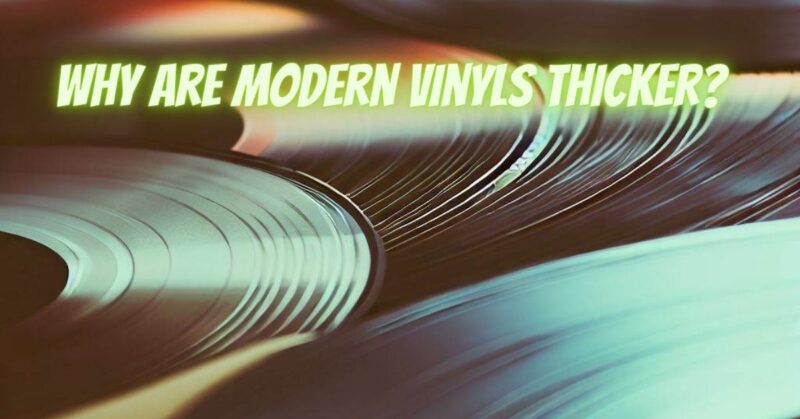Vinyl records, once considered relics of the past, have experienced a remarkable resurgence in popularity in recent years. As more music enthusiasts embrace the analog warmth and tactile experience of vinyl, they might notice a significant difference in newer vinyl records—many of them are thicker than the vintage counterparts. In this article, we’ll delve into the reasons why modern vinyl records are thicker and explore the implications of this change on the vinyl listening experience.
The Resurgence of Vinyl
The revival of vinyl records is a phenomenon driven by nostalgia, appreciation for tangible music, and the desire for a warmer, analog sound. Vinyl offers a unique listening experience that engages not only the ears but also the hands and eyes. As a result, record labels and manufacturers have adapted to meet the demand, leading to innovations and changes in vinyl production.
Why Modern Vinyl Records Are Thicker
Several factors contribute to the increased thickness of modern vinyl records:
- Improved Durability: One of the primary reasons for thicker vinyl records is durability. Modern records are designed to withstand the rigors of repeated playback. Thicker vinyl is less prone to warping and less susceptible to damage from tonearms and needles. This durability ensures that records can last longer and maintain their audio quality over time.
- Audiophile-Quality Pressing: Audiophile collectors and music enthusiasts who demand the highest audio fidelity often prefer heavyweight vinyl. Thicker records provide a more stable surface for the needle, reducing resonance and vibrations. This results in improved sound quality, particularly for high-end audio systems.
- Reduced Surface Noise: Thicker vinyl records have a lower noise floor, meaning they produce less surface noise and crackle. This is a significant advantage for audiophiles who appreciate the quiet background and enhanced dynamics of modern records.
- Improved Bass Response: The thickness of a record can also impact bass response. Thicker records tend to provide better bass reproduction and overall playback quality.
- Visual Aesthetic: The thickness of a record can enhance its visual appeal. Many collectors and enthusiasts appreciate the substantial feel of a thick vinyl record. It can also offer more space for artwork and elaborate packaging.
The Impact on Vinyl Listening
The increased thickness of modern vinyl records offers several advantages to listeners:
- Enhanced Audio Quality: Thicker records can deliver better audio fidelity and reduce surface noise, providing a more immersive listening experience.
- Longer Lifespan: The durability of thicker records ensures that they can withstand the test of time and countless spins on the turntable.
- Audiophile Appeal: Audiophiles often prefer heavyweight vinyl for its superior sound quality, making modern records an attractive choice for discerning listeners.
- Collectibility: Collectors appreciate the aesthetics and durability of thick vinyl records, making them desirable additions to vinyl collections.
The resurgence of vinyl records has brought about positive changes in their production, with modern records being notably thicker. This evolution in vinyl manufacturing aligns with the desire for improved audio quality, durability, and visual appeal. While vintage records will always hold a special place in the hearts of collectors, modern vinyl records offer a new level of listening pleasure, marrying the nostalgia of vinyl with the benefits of contemporary technology. As a result, the vinyl experience continues to evolve and thrive in the digital age, reminding us that quality and craftsmanship transcend eras.


